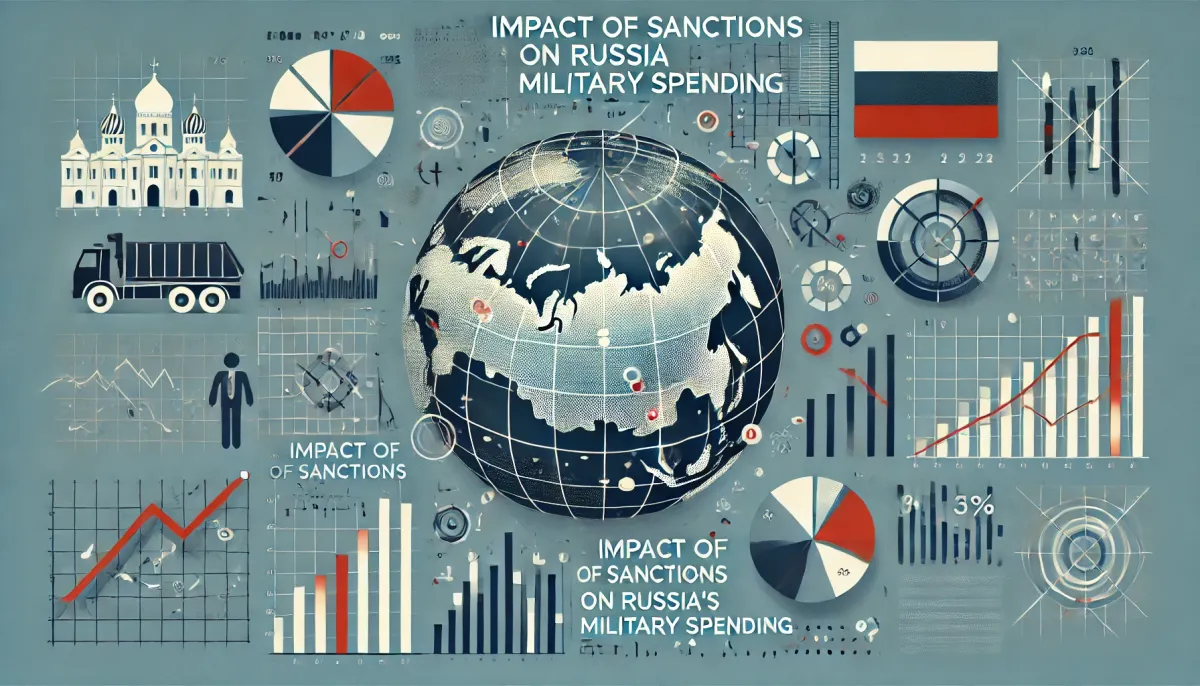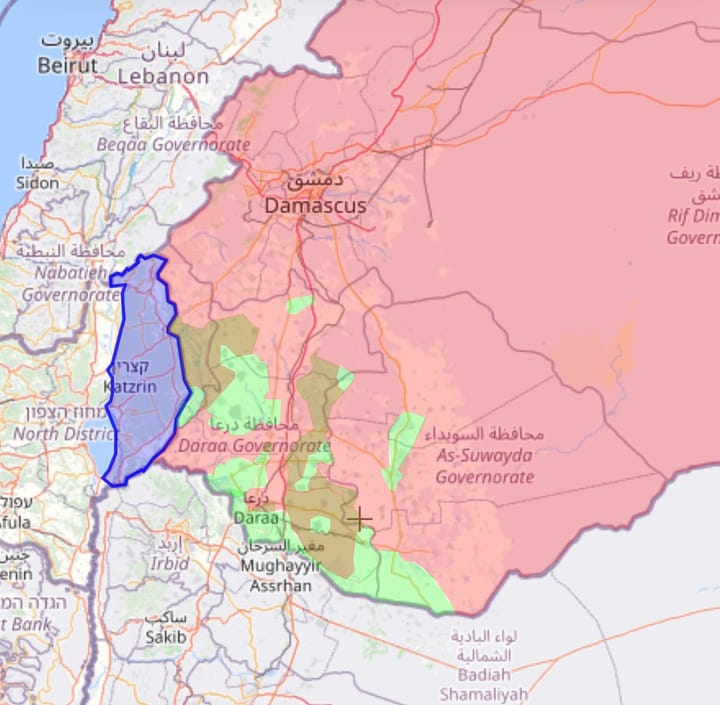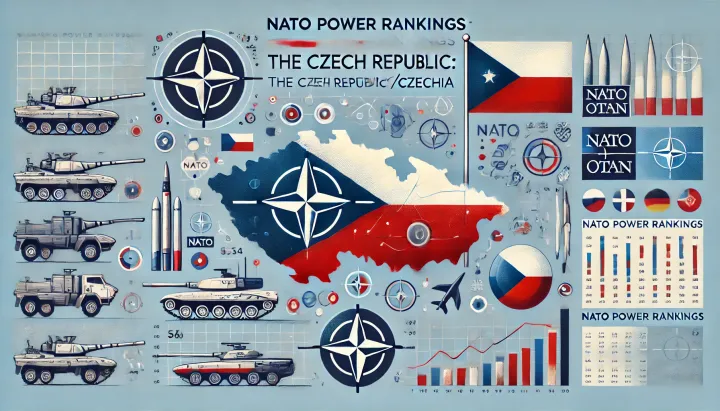Impact of Sanctions on Russia's Military Spending in 2025
In recent years, the geopolitical landscape has been significantly shaped by the imposition of international sanctions on Russia. This article explores the complexities of Russia's military budget, analyzing how sanctions have influenced defense expenditures and strategic priorities.

In recent years, the geopolitical landscape has been significantly shaped by the imposition of international sanctions on Russia. These measures have far-reaching implications, not least of which is their impact on Russia's military spending. As the Russian Federation navigates the constraints imposed by these sanctions, understanding the nuances of its defense budget becomes crucial. This article explores the complexities of Russia's military budget, analyzing how sanctions have influenced defense expenditures and strategic priorities.
The Structure of Russia's Military Budget
The Russian military budget is a critical component of its national defense strategy. Historically, Russia has maintained a substantial defense budget, reflecting its global ambitions and regional security concerns. The budget encompasses various sectors, including personnel costs, equipment procurement, research and development, and operational expenses. However, the imposition of sanctions has necessitated a strategic reassessment of these expenditures.
Historical Context of Russian Defense Spending
Before delving into the impact of sanctions, it is essential to understand the historical context of Russia's military spending. Since the early 2000s, Russia has embarked on an extensive military modernization program, aimed at revitalizing its armed forces and enhancing its global military stature. This initiative was marked by significant investments in advanced weaponry, infrastructure development, and troop readiness.
The modernization efforts were driven by a desire to reassert Russia's influence on the global stage, a response to perceived threats from NATO expansion, and a need to replace aging Soviet-era equipment. The strategic focus was on developing a more agile and technologically advanced military force. This included investments in cutting-edge technology, such as fifth-generation fighter jets and new naval capabilities.
As Russia committed to these upgrades, the defense budget witnessed substantial growth. The government allocated significant resources to ensure the successful implementation of its modernization plans, reflecting a strategic choice to prioritize military readiness and capability enhancement.
Components of the Military Budget
The Russian military budget is structured to address diverse components critical to national defense. Personnel costs form a significant portion, covering salaries, benefits, and training of military personnel. The government's commitment to maintaining a large, professional military force necessitates substantial personnel expenditure.
Equipment procurement is another critical area, focusing on acquiring modern weaponry and technology to enhance operational capabilities. This includes investments in tanks, aircraft, ships, and missile systems, as well as the maintenance and upgrading of existing equipment.
Research and development (R&D) are vital for advancing technological capabilities and ensuring the military remains competitive. Funds allocated to R&D support innovation in areas such as cyber warfare, artificial intelligence, and advanced materials. This strategic investment aims to foster self-reliance and reduce dependency on foreign technology.
Operational Expenses and Maintenance
Operational expenses encompass the day-to-day costs of running the military, including logistics, training exercises, and maintenance of equipment. These expenditures are essential to ensure the readiness and effectiveness of the armed forces. The allocation of resources for operations reflects the military's strategic priorities and the need to sustain a high level of preparedness.
Maintenance costs are crucial for ensuring the longevity and reliability of military assets. The upkeep of equipment, vehicles, and infrastructure requires significant investment, particularly as Russia seeks to extend the service life of its existing arsenal. Effective maintenance strategies are vital for maximizing the return on investment in defense assets.
Impact of Sanctions on Russia's Defense Budget
The imposition of international sanctions on Russia, particularly following its annexation of Crimea in 2014, has had a profound impact on the nation's defense budget. These sanctions, targeting key sectors such as finance, energy, and arms, have constrained Russia's economic growth, thereby affecting its ability to allocate resources to military spending.
Financial Constraints and Budget Adjustments
Sanctions have placed immense pressure on Russia's economy, leading to reduced government revenues and forcing the Kremlin to make difficult budgetary decisions. In response, Russia has had to prioritize its defense allocations, often at the expense of other critical sectors. The defense budget, while still substantial, has witnessed a shift in focus towards cost-effective strategies and resource optimization.
To navigate these financial constraints, Russia has implemented measures to streamline defense spending. This involves reallocating funds to prioritize essential programs and projects that promise the highest strategic returns. Efforts to reduce waste and enhance efficiency have become paramount, with a focus on maintaining core capabilities despite budgetary limitations.
The government has also explored alternative funding mechanisms, such as public-private partnerships and increased collaboration with the domestic defense industry. These approaches aim to leverage private sector expertise and resources, reducing the fiscal burden on the state while sustaining military modernization efforts.
Technological Development and Procurement
Sanctions have also impacted Russia's ability to procure advanced military technology from Western nations. The restrictions on technology transfer have compelled Russia to rely more heavily on domestic innovation and production. While this has fostered a degree of self-sufficiency, it has also posed challenges in terms of maintaining the same level of technological sophistication as its Western counterparts.
To address these challenges, Russia has intensified efforts to develop indigenous technological capabilities. This involves significant investment in research institutions and defense contractors to drive innovation. The focus is on developing homegrown solutions that meet the military's needs while reducing dependency on foreign technology.
The shift towards domestic production has also spurred the growth of the Russian defense industry. By investing in local manufacturing capabilities, Russia aims to build a robust supply chain that supports the production of advanced military equipment. This strategic move not only enhances self-reliance but also provides an economic boost by creating jobs and stimulating industrial growth.
Strategic Reallocation of Resources
In response to sanctions, Russia has strategically reallocated resources within its defense budget to align with changing priorities. This involves a careful evaluation of existing programs and the identification of areas where cost savings can be achieved without compromising national security.
The reallocation process has led to a focus on maintaining core military capabilities while cutting back on non-essential expenditures. Programs that do not directly contribute to strategic objectives have been scaled back or postponed to free up resources for critical projects. This pragmatic approach ensures that defense spending aligns with the nation's strategic goals despite financial constraints.
Strategic Shifts in Military Spending
In light of the economic constraints imposed by sanctions, Russia has had to make strategic adjustments to its military spending. These adjustments reflect a pragmatic approach to sustaining its defense capabilities while navigating the challenges posed by international restrictions.
Emphasis on Asymmetric Warfare
One notable shift in Russia's military strategy is the increased emphasis on asymmetric warfare. With limited resources, Russia has focused on developing capabilities that can deliver strategic advantages without incurring significant costs. This includes investments in cyber warfare, electronic warfare, and precision-guided munitions, which offer effective means of countering conventional threats.
Asymmetric warfare strategies enable Russia to leverage its strengths and exploit the vulnerabilities of adversaries. By investing in cyber capabilities, Russia can conduct sophisticated cyber operations that disrupt enemy communications and infrastructure, providing a strategic edge without the need for large-scale conventional forces.
Electronic warfare has become a key focus area, with investments aimed at disrupting enemy radar and communication systems. This capability allows Russia to neutralize technological advantages held by adversaries, effectively leveling the playing field in potential conflicts.
Regional Defense and Power Projection
While sanctions have curtailed some aspects of Russia's global military ambitions, they have also reinforced the importance of regional defense. Russia has prioritized securing its borders and maintaining influence within its immediate neighborhood. This strategic focus is evident in its military deployments and exercises, which underscore its commitment to regional power projection.
The emphasis on regional defense reflects a strategic calculation to safeguard national interests in areas of geopolitical significance. By strengthening military presence in regions such as Eastern Europe and the Arctic, Russia aims to deter potential threats and maintain its sphere of influence.
Military exercises and deployments serve as a demonstration of Russia's commitment to regional stability and its capability to project power within its vicinity. These actions send a clear message to neighboring countries and potential adversaries about Russia's readiness to defend its interests.
Investment in Strategic Deterrence
In response to sanctions, Russia has placed a renewed emphasis on strategic deterrence capabilities. This involves investments in nuclear forces and missile defense systems, which serve as a cornerstone of Russia's defense strategy. By maintaining a credible deterrent, Russia aims to dissuade potential adversaries from engaging in aggressive actions.
The modernization of nuclear forces ensures that Russia's strategic capabilities remain effective in the face of evolving threats. Investments in advanced missile systems and delivery platforms enhance the credibility of Russia's deterrent posture, reinforcing its status as a major nuclear power.
Missile defense systems play a crucial role in protecting critical infrastructure and population centers from potential attacks. By investing in these systems, Russia aims to enhance its defensive capabilities and ensure national security in an increasingly complex global security environment.
Economic Implications of Reduced Military Spending
The impact of sanctions on Russia's military spending extends beyond the defense sector, influencing broader economic dynamics. Reduced military expenditures have both direct and indirect implications for Russia's economy, affecting employment, industrial output, and technological innovation.
Industrial Base and Employment
The defense industry plays a crucial role in Russia's industrial base, providing employment to a significant portion of the workforce. Reduced military spending can lead to job losses and decreased industrial output, further straining an economy already grappling with sanctions-induced challenges.
The contraction of the defense sector can have ripple effects across related industries, impacting suppliers and service providers. This can result in a decline in economic activity and exacerbate unemployment issues, particularly in regions heavily reliant on defense industry jobs.
To mitigate these effects, the government has sought to diversify the industrial base by promoting civilian applications of defense technologies. This involves supporting the development of dual-use technologies that can be applied in both military and civilian sectors, creating new opportunities for economic growth and employment.
Innovation and Technological Advancement
On the flip side, the need for domestic innovation in response to sanctions has spurred technological advancement within Russia. The drive to develop indigenous solutions has fostered a culture of innovation, with potential long-term benefits for the country's technological capabilities.
The emphasis on innovation has led to the establishment of research institutions and technology incubators focused on developing cutting-edge solutions. This has created an ecosystem that encourages collaboration between academia, industry, and government, driving technological progress across various sectors.
The pursuit of self-sufficiency in technology has also accelerated the development of critical capabilities in areas such as artificial intelligence, robotics, and cybersecurity. These advancements have the potential to position Russia as a leader in emerging technologies, with implications for both defense and civilian applications.
Economic Diversification and Resilience
The challenges posed by sanctions have prompted Russia to explore avenues for economic diversification and resilience. By reducing dependency on defense spending, the government aims to foster the growth of other sectors, such as technology, agriculture, and manufacturing.
Efforts to diversify the economy involve investments in infrastructure, education, and research to create a more balanced and resilient economic landscape. This strategic shift aims to reduce vulnerability to external shocks and enhance the country's ability to withstand economic pressures.
The development of a diversified economy also provides opportunities for international collaboration and trade, further strengthening Russia's economic position. By expanding its economic base, Russia seeks to build a foundation for sustainable growth and prosperity in the face of ongoing challenges.
Future Prospects for Russia's Defense Budget
As Russia continues to navigate the complexities of international sanctions, the future of its defense budget remains uncertain. Several factors will influence the trajectory of Russian military spending, including geopolitical developments, domestic economic conditions, and technological advancements.
Geopolitical Considerations
Russia's defense budget will be shaped by its geopolitical aspirations and security concerns. As tensions persist with Western nations, the Kremlin will likely continue to prioritize defense spending, albeit with a focus on strategic areas that maximize impact within budgetary constraints.
The evolving security environment will necessitate continuous assessment of threats and opportunities, guiding defense budget allocations. Russia's strategic priorities will be influenced by regional dynamics, such as its relationships with neighboring countries and its role in international alliances.
Geopolitical considerations will also impact Russia's approach to defense cooperation and arms exports. By strengthening partnerships with non-Western countries, Russia aims to expand its influence and secure alternative markets for its defense industry.
Domestic Economic Recovery
The pace of economic recovery will play a crucial role in determining the extent to which Russia can sustain its defense expenditures. A robust recovery could provide the government with greater fiscal flexibility, allowing for increased investment in defense capabilities.
Economic recovery efforts will focus on addressing structural challenges and promoting sustainable growth. By implementing reforms and investing in key sectors, the government aims to create a conducive environment for economic revitalization.
A stable and growing economy will enhance Russia's ability to fund defense initiatives without compromising other critical areas. This balance between economic and defense priorities will be essential for maintaining national security in the long term.
Technological Innovation and Adaptation
The ability to adapt to technological challenges will be a defining factor in Russia's military spending strategy. Continued innovation and the development of indigenous technologies will be essential for maintaining military effectiveness in the face of ongoing sanctions.
Russia's focus on technological innovation will involve strategic investments in research and development, as well as collaboration with international partners in areas not subject to sanctions. This approach aims to leverage global expertise while building domestic capabilities.
The adaptation to technological advancements will also require a skilled workforce capable of driving innovation. By investing in education and training programs, Russia seeks to cultivate a pool of talent that can contribute to the country's technological and defense objectives.
Conclusion
The impact of sanctions on Russia's military spending is a multifaceted issue with significant implications for both national defense and the broader economy. As Russia navigates these challenges, it must balance its strategic priorities with economic realities, ensuring that its defense capabilities remain robust in the face of international constraints. The future of Russia's defense budget will depend on its ability to adapt to changing geopolitical dynamics and leverage technological innovation to sustain its military ambitions.



